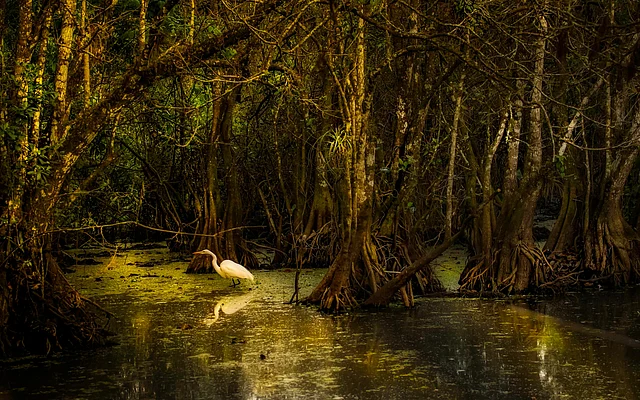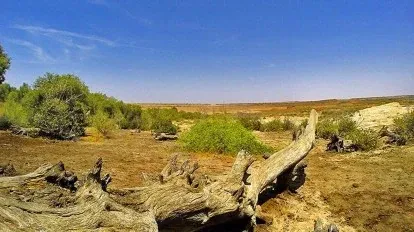Beyond Swamps: How Wetlands Shape Our World

Hey there, young explorers! 🌍
Have you ever wondered why wetlands are like the superheroes of nature? Well, buckle up, because today we’re diving into the magical world of wetlands to discover how they save the planet and meet some cool wetland residents along the way! And guess what? You can see wetlands in action by checking out this Cool Video explaining how wetlands work!
Imagine a place where water and land come together to create a unique and vibrant ecosystem. That’s what wetlands are! They’re like nature’s sponges, soaking up extra water during heavy rains and releasing it slowly during dry times. This helps prevent floods and droughts—talk about being a superhero! But that’s not all. Wetlands are also nature’s water filters. They clean the water by trapping pollutants and dirt, making it safe for animals and even humans. Plus, they’re home to some of the most amazing plants and animals you’ll ever see. From colorful birds to sneaky reptiles, wetlands are buzzing with life!
And here’s the coolest part: wetlands are like Earth’s air conditioners. They absorb carbon dioxide, a gas that contributes to climate change, and store it in their soil. Wetlands store more carbon than any other ecosystem on Earth, with peatlands alone storing twice as much as all the world’s forests. This helps keep our planet cool and healthy. So, next time you hear about wetlands, remember that they’re not just swamps or marshes; they’re Earth’s superheroes!
One such remarkable wetland ecosystem exists in the dry landscapes of Kutch, where nature has defied expectations and created a unique mangrove forest far from the sea.

Guneri’s mangroves are a fascinating part of nature, growing 45 kilometers from the sea. They began nearly two thousand years ago when the Rann of Kutch was a shallow sea. As the Arabian Sea slowly moved away because of Earth’s shifting plates, these mangroves survived by drinking underground brackish water. Mostly of the species Avicennia marina, they can grow up to 25 feet tall in Kutch’s dry land. These trees provide a safe home for animals like deer, blue bulls, jackals, and many migratory birds. This ancient forest shows us how nature adapts and thrives against all odds every day.
In an exciting conservation milestone, Gujarat has declared the 32.78-hectare inland mangrove site in Guneri village, Kutch district, as its first Biodiversity Heritage Site. This unique ecosystem, tucked away 45 km from the Arabian Sea and 4 km from the Kori Creek, defies the traditional image of mangroves thriving in coastal, saline conditions. Unlike typical mangrove forests that depend on seawater and muddy coastlines, Guneri’s inland mangroves flourish on flat terrain enriched by ancient limestone deposits. These deposits provide a steady flow of groundwater, nurturing a distinct ecosystem that has quietly existed for centuries.
Wetlands vs. Climate Change: Who Will Win?
Now, let’s talk about the ultimate battle: Wetlands vs. Climate Change! 🌡️ Climate change is like a big, scary monster that’s making our planet hotter and causing extreme weather. But guess what? Wetlands are here to save the day!
First, wetlands store carbon dioxide, which helps reduce the effects of climate change. Think of them as giant carbon vacuum cleaners. Second, they protect us from storms and rising sea levels by acting as natural barriers. When big waves come, wetlands absorb the impact, keeping the land behind them safe. Mangroves and other coastal wetland ecosystems are storm buffers, providing a natural shield against hurricanes and tsunamis. They also play an important role in the recovery phase after powerful storms by providing food and building materials.
Wetlands also act as nature’s disaster management system by absorbing excess water and preventing floods. They help store fresh water, which is critical in regions that experience long droughts. These incredible ecosystems provide water storage and purification, making them vital for drinking water, farming, and food production.
But here’s the thing: wetlands need our help. Wetlands are disappearing three times faster than forests and are Earth’s most threatened ecosystem. In just 50 years—since 1970—35% of the world’s wetlands have been lost. Human activities such as drainage for agriculture, pollution, overfishing, invasive species, and climate change are leading to wetland destruction. If we don’t protect them, climate change might win the battle.
Wetlands help sustain local communities by supporting fisheries, agriculture, and fuel production. More than a billion people across the world depend on wetlands for their livelihoods—that’s about one in eight people on Earth! Rice paddies, fishponds, and reservoirs provide food and income for millions. Protecting wetlands means protecting jobs, food security, and entire ecosystems.
🌿 Every small action counts! Whether you’re spreading awareness, picking up litter, or planting a tree, you’re making a difference. Wetlands are nature’s superheroes, but even superheroes need sidekicks. Let’s be the team that stands up for wetlands and ensures they continue to protect us and our planet! So, next time you read or hear about wetlands, remember—it’s not just a patch of water and plants; it’s a lifeline for nature, people, and the future.
💧🌎 Happy World Wetlands Day! 🎉
References
- Novenario, C. (2022, February 16). 5 Ways Wetlands are Crucial to Climate Change Adaptation. Global Center on Adaptation. https://gca.org/5-ways-wetlands-are-crucial-to-climate-change-adaptation/
- United Nations. (n.d.). World Wetlands Day | United Nations. https://www.un.org/en/observances/world-wetlands-day
- V. Selvam, & V. Selvam. (2021, November 21). Mangroves – Wetlands or forests? India Water Portal. https://www.indiawaterportal.org/environment/ecology/mangroves-wetlands-or-forests
- Yadav, B., Mumba, M., Nandan, L., Ramsar Convention on Wetlands, Kumar, J., Bajpayee, S. K., Yoo, B.-S., Tamrakar, B., Mumba, M., Yadav, M., Vijayvargia, K., Silawat, T. R., Chouhan, N. S., Ahirwar, D., Bhargav, P., Kumar, J., & Bajpayee, S. K. (n.d.). Report on the celebration of World Wetlands Day 2024.
- Dabhi, P. (2025, January 31). Gujarat village’s inland mangrove to be state’s first Biodiversity Heritage Site.
The Indian Express. https://indianexpress.com/article/cities/ahmedabad/gujarat-guneri-kutch-mangrove-biodiversity-heritage-site-9807918/


